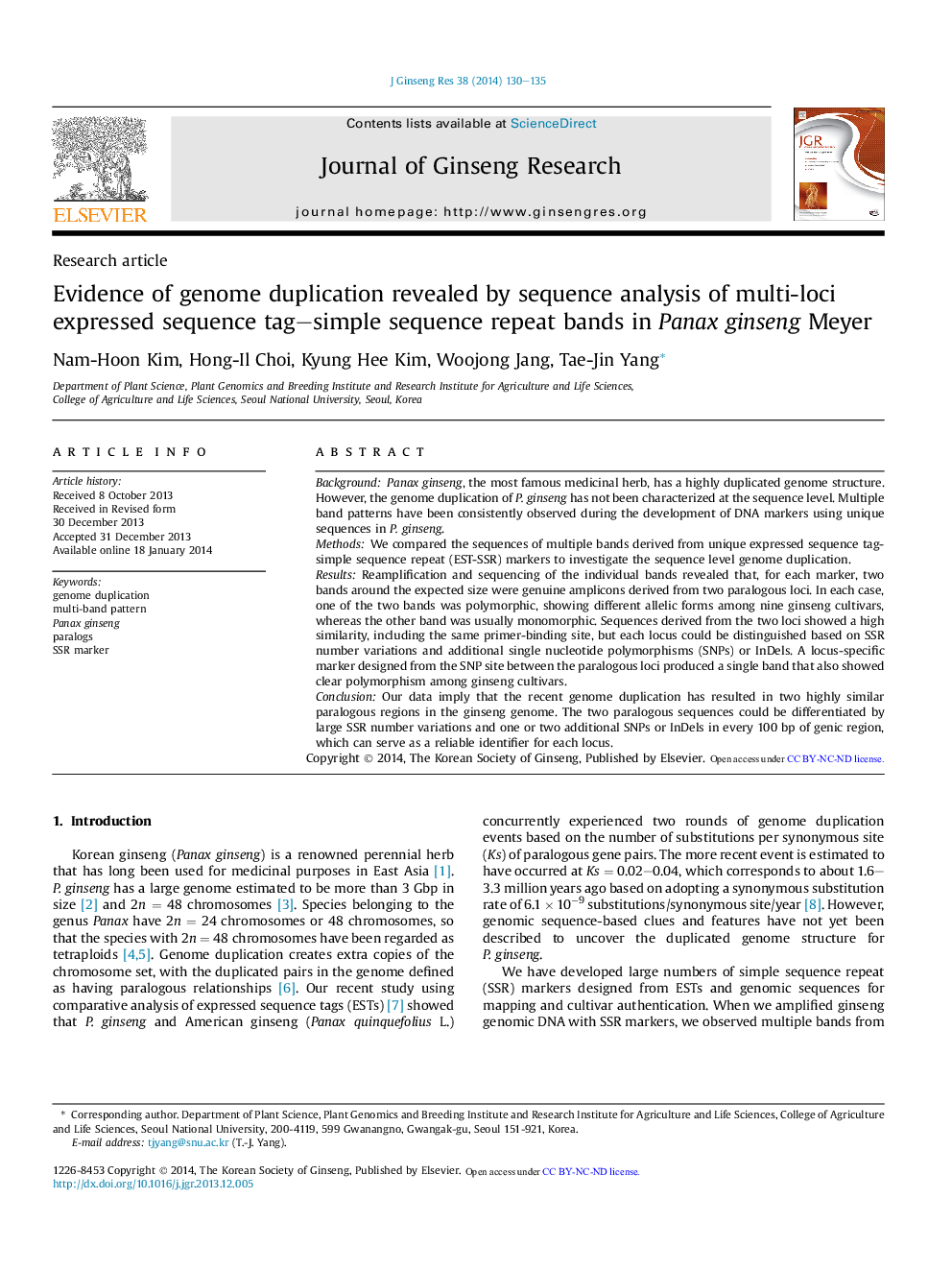| Article ID | Journal | Published Year | Pages | File Type |
|---|---|---|---|---|
| 3099383 | Journal of Ginseng Research | 2014 | 6 Pages |
BackgroundPanax ginseng, the most famous medicinal herb, has a highly duplicated genome structure. However, the genome duplication of P. ginseng has not been characterized at the sequence level. Multiple band patterns have been consistently observed during the development of DNA markers using unique sequences in P. ginseng.MethodsWe compared the sequences of multiple bands derived from unique expressed sequence tag-simple sequence repeat (EST-SSR) markers to investigate the sequence level genome duplication.ResultsReamplification and sequencing of the individual bands revealed that, for each marker, two bands around the expected size were genuine amplicons derived from two paralogous loci. In each case, one of the two bands was polymorphic, showing different allelic forms among nine ginseng cultivars, whereas the other band was usually monomorphic. Sequences derived from the two loci showed a high similarity, including the same primer-binding site, but each locus could be distinguished based on SSR number variations and additional single nucleotide polymorphisms (SNPs) or InDels. A locus-specific marker designed from the SNP site between the paralogous loci produced a single band that also showed clear polymorphism among ginseng cultivars.ConclusionOur data imply that the recent genome duplication has resulted in two highly similar paralogous regions in the ginseng genome. The two paralogous sequences could be differentiated by large SSR number variations and one or two additional SNPs or InDels in every 100 bp of genic region, which can serve as a reliable identifier for each locus.
